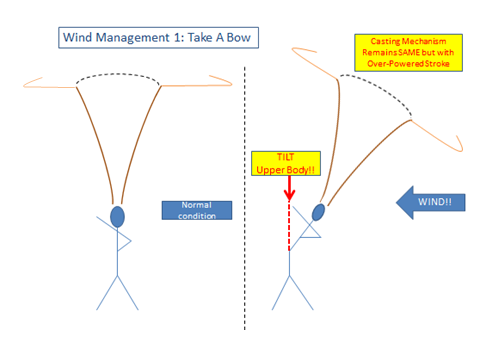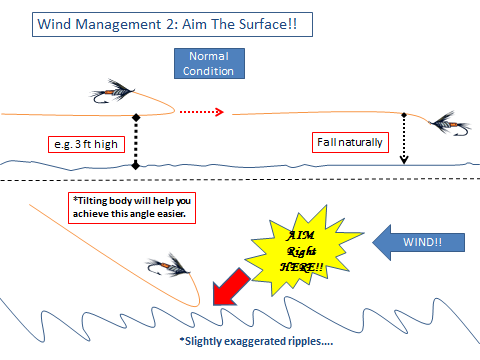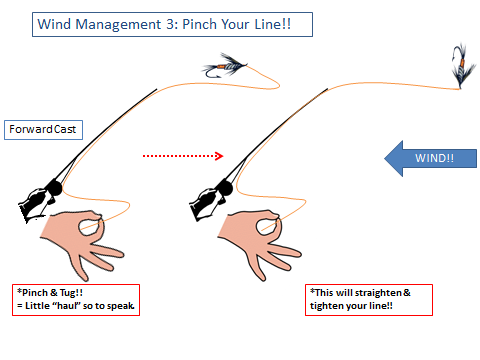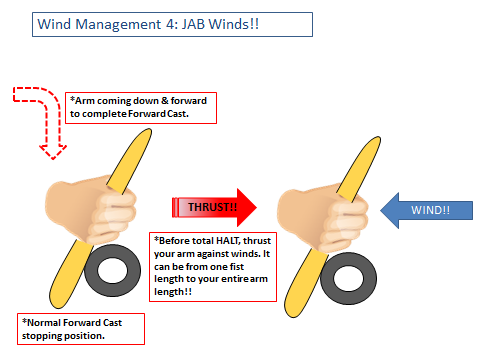LATE & EARLY SEASON AT DEPUY'S (part 15)
| Sysadmin Note |
|---|
| Part 14 can be found here |
Finally, as a guide in Livingston, I'd like to discuss our biggest concern - winds. I have discussed wind problems and solutions here and there in previous chapters with case-studies at DePuy's. Those can be applied to different waters and other fishing situations. Here I'd like to discuss one basic matter - casting. I'm not a certified casting instructor or anything and there are many other better casters than I am. However, guiding lots of clients with different skill levels on windy days, I have developed something to say. I don't use super technical terminology. Rather, I will quote what guides say and do right on rivers and creeks on windy days.
Accept Winds:
Living in Paradise Valley, wind is part of our life. Yes, it can be brutal even for residents. So it's normal that visiting anglers can get disappointed with the condition. But are there any perfectly non-windy places in the world? During the summer months, it's THE wind that knocks over hoppers, ants, and other terrestrials onto the water. Does wind stir up the surface and make dry-fly fishing impossible? Then swing soft-hackles below the surface or go deep with nymphs and streamers. I encourage clients all the time. It's a little adjustment on mind-set. Rather than trying to beat wind, accept it and let it blow (basically I'm saying "ignore!"). But also there are certain physical skills that will help you cast flies on windy days. Those may not be perfect solutions yet it makes those days productive. I primarily focus on "head-winds" whether we are float or wade-fishing. Let's go through with "guides' jargons".
Energize Casting Stroke:
Your casting mechanism (movement for back and forwardcast, pause in between, timing, and so forth) remains the same. Then add more speed and power. It's a simple physical task. However, the first step to achieve this is up to your mind. Don't be intimidated, you can do it! This is very fundamental. The following techniques are achieved better along with this extra speed and power.
Tilt Your Body:
While maintaining your casting mechanism and energized your casting stroke, take a bow (tilt your body) into the head-winds. This will help you attain an angle that your line can cut through winds.
 |
Aim at the Surface:
On calm normal conditions, we typically cast into air above our target. For example, when your target is behind that rock, you cast into air above (e.g.,3 feet above), the line and leader will straighten, and the fly will fall onto the water surface behind that rock without a splash. However on windy days, you'd aim directly where you want your flies to be on the surface rather than aiming above the target. The surface is somewhat stirred anyway so don't worry about the splashes caused by your flies and leaders. It's more important to place and present your flies at the right spot first than be concerned about splashes. Otherwise nothing will occur. This can be accompanied and achieved better with both the energized casting stroke and take-a-bow posture.
 |
Pinch Your Line:
This is an accessory technique that can be applied along with methods above. As you complete the forward-cast and shoot your line, pinch and even tug your line with your line-hand. That's essentially a little "hauling" which adds extra power to your line and straightens your line in the wind.
|
Jab Winds! - Thrust:
This is also an accessory technique that accompanies the other techniques. As you complete the forward cast at the normal stopping position, thrust your entire arm forward as if jabbing the headwinds (feels better, doesn't it?). This will also boost the power to your line.
|
Line & Tippet:
Since a weight forward line is designed to have more weight toward the forward end of line, it's true that it can cut through winds better than double taper line. As the wind increases I shorten my leaders to around 9 to 10 feet maximum. I also use tippets one size larger than under normal conditions. I switch into 3x from 4x or 5x. The heavier tippet will help us turn over our line-leader-fly system in the wind and place our flies at where you aim. Showing our flies to trout is the first and foremost important task!
It will definitely be beneficial if one can practice all of these before visiting Montana. Just keep these skills in minds and perform then even under normal non-windy conditions. Then again, developing a mind-set that won't be "blown away" by the winds is the fundamental step to help build up these skills. I fish every month of the year right here in Paradise Valley. It doesn't really matter to me whether it's windy or not as I know how to get along with winds by applying these skills.
Epilogue: So this is the last chapter of series. I have covered everything I'd like to share. I hope the information present here has been interesting and useful for readers who are planning to visit DePuy's and other Livingston fisheries in the near future. "Learning and observation will never end". That's the first mantra Tom Travis gave to me.
Right after I close this file, I will be standing at DePuy's in spite of stiff Southwest winds. Soon I will come up with more flies and new methods and I will keep you updated. I sincerely appreciate the Smith Family; Betty for welcoming me every time I knock on the door and Daryl and Theresa for answering my compulsive phone calls. I sincerely hope DePuy's, Armstrong's' and Nelson's will run forever.
Satoshi Yamamoto, https://leftyangler.blogspot.com, brought his passion for fly-fishing & fly-tying from Japan to Montana and became the first ever Japanese guide in Livingston, MT. He guides and fishes on big rivers like Madison & Yellowstone, spring creeks in Paradise Valley, and various waters in Yellowstone Park. Hence, with his Regal Vise at the bench, his fly tying interests vary from tiny midges to 5 inch streamers and anything in between. Once his ideas are combined he goes out for experiments at those nearby waters. Satoshi submits his innovative patterns to Montana Fly Company (www.montanafly.com).
His own innovative original patterns can be purchased from his fly-shop, https://leftytyer.blogspot.com.


